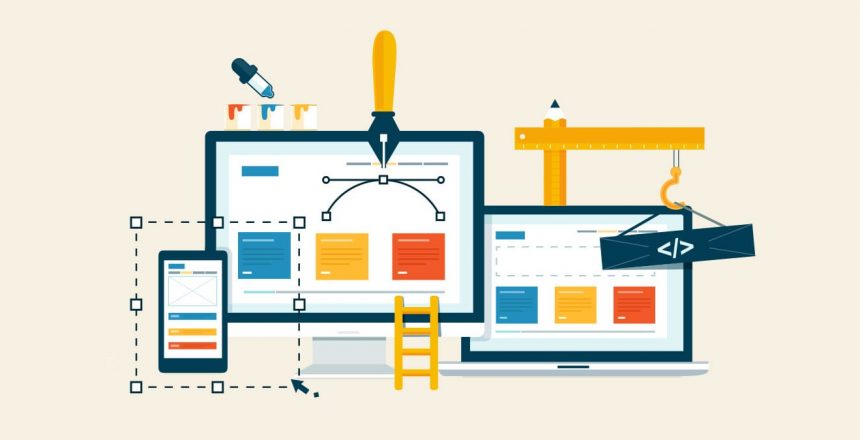When designing for print there is an end product that is predetermined and controlled. From an infinite number of choices of colour, stock, size and so on, the final product is a finite platform. This controlled end product encourages the designer to push boundaries without fear of the design being corrupted by unforeseen scenarios.Designing for Web is the complete opposite. There are a number of unknown variables that can alter the way a design is rendered to the end user, but I’m going to discuss screen dimensions in this post.To get a grasp on the number of different screen resolutions out there take a look at this wikipedia link or here for some responsive website inspiration.To get around this multitude of devices and screen resolutions, more often than not, an interface is designed to be Responsive.Responsive Web Design is a term used to describe a website that can adjust to different screen sizes. This technique is now the norm for the majority of websites built today.Responsive Design can look great across multiple devices, but it is never groundbreaking. In fact most design that looks at a median to determine the end result will end up being mediocre (ie. office chairs, suits, pop music, town housing). To create something inspiring, one needs to have a specific end user, a niche that can be defined. iPhone apps are capable of this.An iPhone App can be likened to a tailored suit. Both are designed with known required specifications and the end result can be awesome.Responsive Design is a necessary tool however. Most websites built today need to be user friendly to 99% of visitors. This use to be pretty straight forward, when desktop monitors were relatively the same size. Nowadays though, your site needs to be user-friendly for large widescreen monitors, laptops, tablets, smart phones and everything in between. This is where responsive design saves the day with an interface and user experience fit for the masses. The result (more often than not) is a humdrum interface built around one of the numerous frameworks available (Bootstrap, Skeleton, Foundation etc). This also results in most websites showing extreme similarities.What is the the solution then? Well unfortunately for most there isn’t one. For those with a budget that stretches far and wide, three specific versions of your site could be crafted to suit idealistic dimensions for mobile, tablet and desktop. This approach is a vehicle for highly crafted and revolutionary design.One company that does this extremely well is Freshbooks. Their website is not responsive, but their Tablet and Smartphone apps are specifically forged for a flawless user-experience.For all web designers, responsive layouts are unavoidable in most cases. Keep in mind that the number of possible end scenarios is directly proportional to mediocrity. So, whenever the opportunity arises, device specific websites should be encouraged, and then avant-garde solutions strived for.
